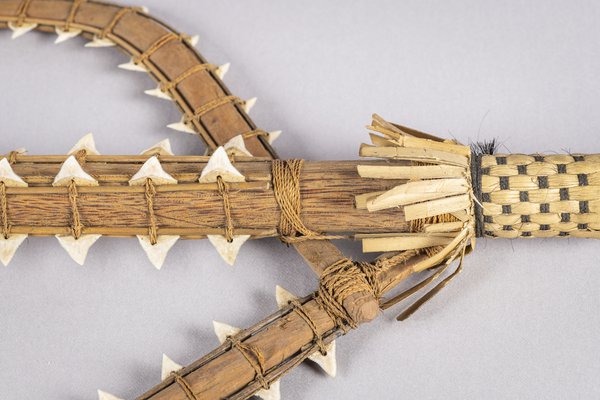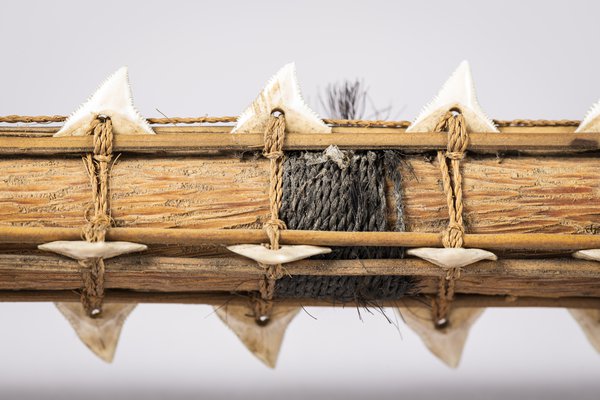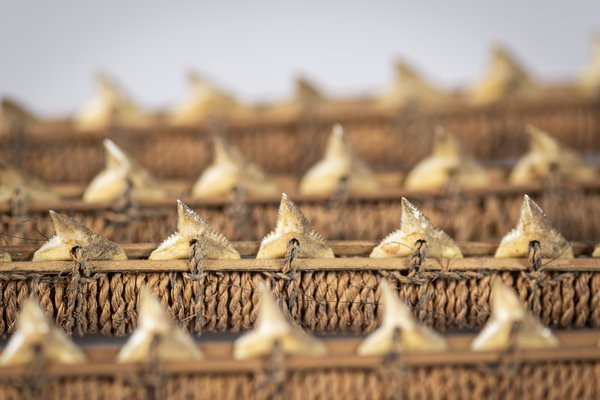Sharks: many places, many stories
For 450 million years they’ve dominated our oceans but today sharks are now under threat. Hear from First Nations peoples, scientists and conservationist as they share their stories about these ancient survivors.


Sharks tell a story
Having swum in the world’s oceans for over 450 million years and survived five global mass extinctions, sharks are now under threat. Global warming, industrial fishing and pollution are damaging our oceans.
Our attitudes and our actions will decide the fate of these ancient survivors.

Video Transcript
The ocean is a part of me and I am a part of it.
I jump in, or roll in and I enter another world.And it's a world where I can fly. I can spread my arms and fly.
The first time that I had a Whale Shark cross in front of my speedboat in Indonesia and I were just blown away by this big thing. And I was actually dressed in business attire and I quickly stripped off everything and jumped in just because it's such an amazing animal.
At the age of nine. I declared to my family - Marine biology, that's it. That's what I'm going to do with my life. And yeah, they all sort of looked at me like, okay.
We love these animals. Yeah, we protect them as a baby.
Through my university career, I was lucky enough to volunteer for a fish conference, and I met the scientists at the Australian Museum and I thought I found my people.
Peter Last said "do you want to paint all the sharks and rays and chimaeras in the world that are alive?" And I said, "Yes, okay, I'll do that."
Within sharks, you've got over 500 species and most people just know, like White Sharks and Bull Sharks, but there's an amazing diversity. Many of them are smaller sort of forms that eat crabs and shells and things like that, and so they have a number of different roles that they play in the oceans.
You need to be able to eat and you need to be able to not get eaten. Those are the things that a newborn shark needs to learn how to do.
Perhaps one of the reasons they have been around for so many millions of years is that, you know, they're not just mindless killing machines. They're very good at killing things, that's true, but they're also really intelligent animals.
Their sheer size, of course, gives them real presence and it's always a bit of an adrenaline rush to see one.
Shark finning, the trade, there's essentially 100 million sharks per year that are harvested legally and illegally.
If the fish are diminishing, you should reduce the number of ships, allow the fish to regenerate, create more reserves.
A live shark is worth far more than a dead shark. We just need to think about eco tourism in places like Fiji with Bull Sharks, for example. It's been a huge success story.
The environment is not a resource. It's actually part of who we are spiritually, culturally, yes economically, but more so in a genealogical sense.
A Tiger Shark. I have much respect for it, that is my totem.
Nothing could be better than having sharks managed with Aboriginal and Torres Strait Islander people that have management and cultural relationships and cultural obligations to those animals. There couldn't be any better outcome for Australia and there couldn't be any better outcome for sharks.
Here in Sydney, where the Pacific meets Australia, we’re honoured to have First Nations peoples, scientists and conservationists, sharing their stories about sharks.

Many Australian and Pacific First Nations peoples have beliefs and cultural practices around sharks.
In this exhibition we bring you just some of the people, places and stories about sharks from the great wash of the Pacific Ocean.
Saltwater people and cultures
In many Pacific Island cultures, sharks were and still are admired for the very things that make us fear them – their strength, speed and ferocity.

Shark teeth as weapons
Warriors from Kiribati in the central Pacific Ocean traditionally used lacerators – long sword-like weapons with serrated edges made from many shark teeth.
DNA tests on some Kiribati lacerators showed that the types of sharks these teeth came from are no longer found in the waters around Kiribati. This is thought to be because of shark finning.
Dress for success
If you’re being attacked by a warrior wielding a weapon made of razor-sharp shark teeth, you’re going to need some serious protection. The te otanga (armour) is made of thickly woven coconut fibre. It is usually woven by the women incorporating their hair as decoration and protection.
It is worn with a set of overalls, sleeves, and a torso covering over the top. A high backboard protected from attacks from behind. The te bwara n tauti (helmet) is made from dried inflated puffer fish. Once a warrior was dressed, water was poured over the armour so that it swelled and became impenetrable.
Knuckle Dusters
The armour also includes the Otangan te bai (knuckle dusters). It is also made from coconut fibre and inlaid with sharks teeth across the knuckles.



